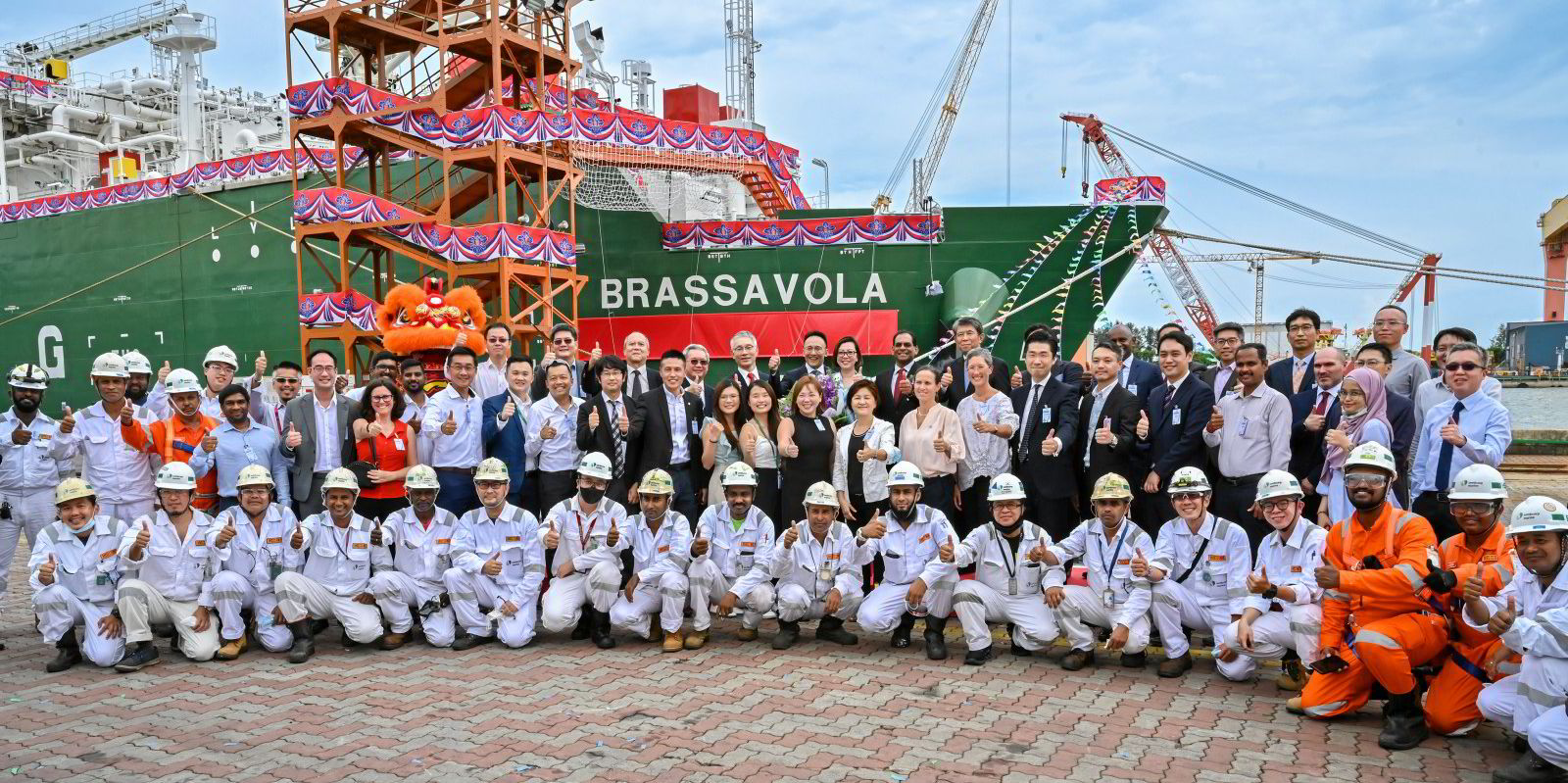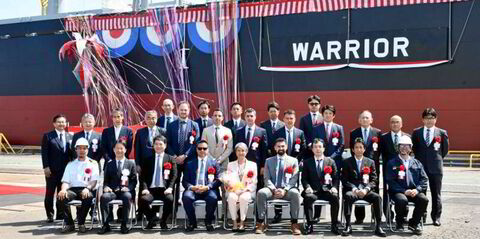The take-up of greener fuel options by shipowners has reached a new high in the first eight months of this year.
Clarksons Research tallies a record 59% of all newbuilding orders in tonnage terms classed as alternative-fuel capable.
This is one-third of the ships contracted in pure number terms.
In 2021, 31.5% of newbuildings were alternative-fuel capable.
So far in 2022, LNG dual-fuel vessels account for 54% of the total, or 288 orders of 27m gt.
Owners have opted for methanol in 2.9% of cases, with 19 ships contracted of 1.4m gt.
Ethane and hybrid battery propulsion also feature in small numbers, while a further 12.7% of orders — 73 vessels — were ammonia-ready.
Just 0.1% of orders, or three ships, were hydrogen-ready.
“There is an increasing trend towards multiple fuels…to provide future optionality,” the UK company said.
Clarksons Research calculates that 4.8% of ships on the water can now use alternative sources of fuel, up from 3.7% in 2021.
LNG fuel dominates orderbook
Nearly 44% of the total newbuilding orderbook will also be able to run on greener propulsion, compared to 28.2% the year before.
Again, LNG dominates, with 38.9% of vessels contracted at yards set to use the fuel.
“With future optionality over fuel choice continuing to gain traction, there are now over 320 LNG-ready ships in the fleet and 99 on the orderbook, while there are 130 ammonia-ready and six hydrogen-ready vessels on order, Clarksons Research said.
In addition, scrubbers are now fitted to 24.9% of the fleet in gross tonnage terms.
Retrofitting activity has slowed to 15 ships in September, down from 120 in the same period a year before, in strong charter markets.
But uptake for new ships grew slightly in 2021, while 60 scrubber-fitted units have been ordered in 2022 so far.
Price spread still attractive
“The current price differential between HSFO [high-sulphur fuel oil] and VLSFO [very low-sulphur fuel oil] remains highly significant,” the company said.
The low-sulphur bunkers are $320 per tonne more expensive in Singapore currently.
The average age of the world fleet is increasing, however, standing at 12.2 years, up from a low of 9.7 years in 2013.
Bulkers are 11.5 years old on average, the figure for tankers is 12.1 years and for boxships 14.2 years.
Clarksons Research believes around 40% of today’s tanker, bulker and container ships fleets will fail to meet Carbon Intensity Indicator (CII) targets if still trading in 2026, unless speed or specifications are modified.





